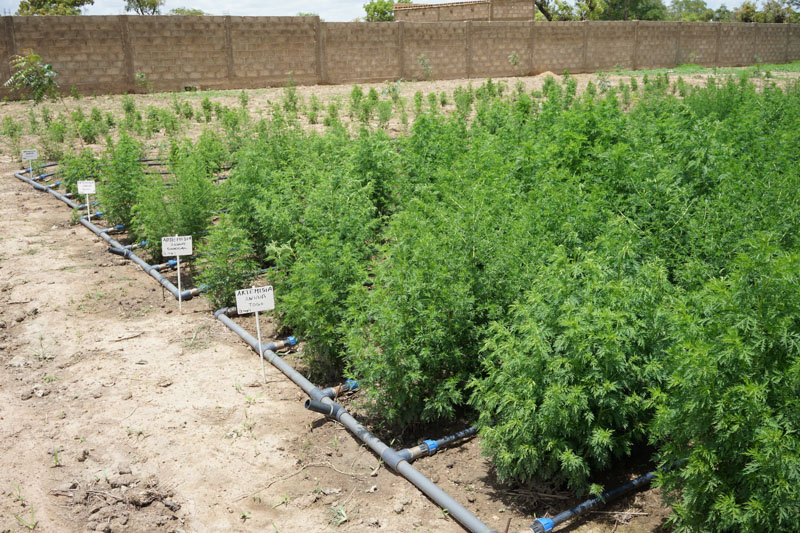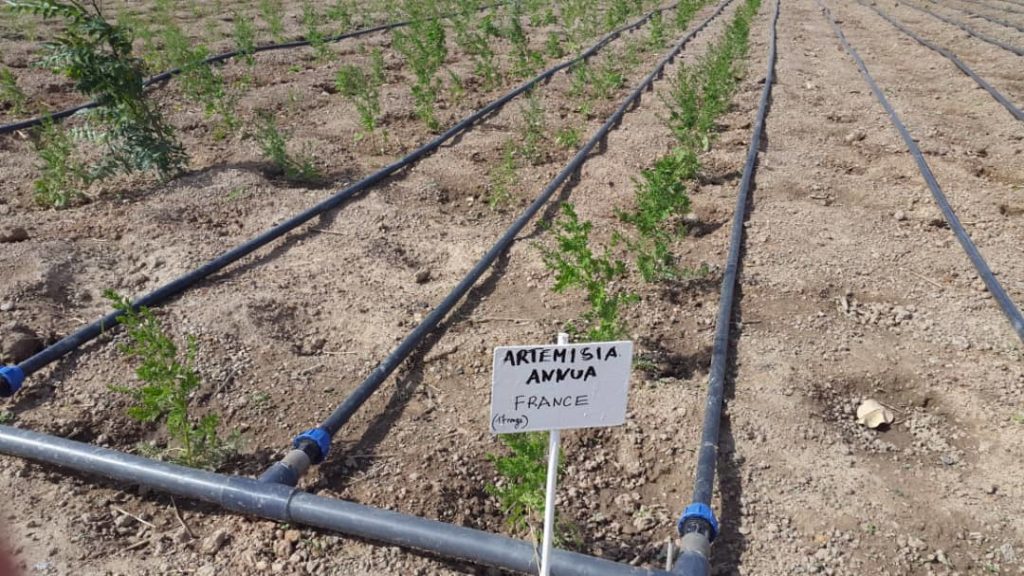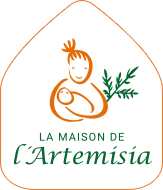Growing trial
Download in pdfThere are several cultivars of Artemisia annua. It is difficult to know in advance which is best suited for a specific biotope and the optimal growing period.
The growing trial will therefore test seeds from several sources to determine which works best for a given context.
The optimal growing period is when days are long, water is available and harvesting outside of the rainy season is possible.
Objectives :
- What and when to plant? Identify the most suitable seeds and the best growing period.
- Choose the best seed suppliers! Collect seeds from the most suitable plants.

Schedule for growing trial
- Ideally, start new seedbeds so you can transplant each month in the field 1 row of 20 new plants for each cultivar.
- If the frequency (sowing and transplanting each month) is too demanding, choose four dates based on the seasons.
- If the number of plants required is difficult to manage, transplant 1 row of 15 new plants for each cultivar on each date.
Site selection
Make sure that the site is uniform (same soil type, sun exposure, water supply, …) and as flat as possible.
If the ground is not flat and there is risk of waterlogging, plant lines in the direction of the slope to facilitate drainage.
If the site is not uniform, plant rows in such a way as to expose them all equally to the source of variability.
If several plots or fields are available, carry out the trial in different locations (1 row of 20 plants per cultivar and per date).
This is the principle of repetition: two plots of equal area, the same number of viable plants, the same cultivar and the same transplantation date that are geographically separated will give much more representative results than one plot. This will enable possible differences between plots to be taken into account and spread the risk of pests or other unexpected issues.
Cultivation operations
Important: clearly delimit the plant beds for each cultivar! Use wooden boards to separate beds and write on the cultivar name of each zone.
and use the same quantity and quality of water and compost for each trial!
if possible with the same regularity after transplantating; as soon as necessary in the first weeks and then approximately every month.
as the objective here is to see which cultivar is best suited to local conditions.
once only (one final cut). The objective of the growing trial is to identify which cultivar is best adapted to the growing site for each period of the year and see if the cultivar flowers prematurely, rather than to produce as much herbal tea as possible by regular cutting.
Observations
of sowing and transplanting for each row in a notebook
on the trial site (sector + landmarks + possible variability factors for each row) and the number of plants in each row.
and check each week for pests, disease or other abnormalities.
with description and evaluation of the infestation rate (% of affected plants on the plot), impact (evaluation of lost production per affected plant), and mortality rate (% of dead plants).
when half the plants have formed flower buds, all the plants in the row EXCEPT those that have been attacked by pests or disease (ie with estimated 50% or more loss of production or impacted over 50%).
of the smallest plant (minimum height), the largest plant (maximum height) and the average height (sum of heights of all the plants ÷ number of plants in the row) taking into account only the plants that have not been seriously attacked by pests or disease.
of cutting (to be done as soon as the flower buds appear on half of the plants in the row, after taking measurements).
in order to weigh and note the dry material production per unit (row and zone) and calculate the average dry material produced per plant (taking only into account plants that have not been badly attacked by pests and disease).
IMPORTANT: Do not cut the best plants but leave them to flower for seed collection. (See File Seed Production)

Seed selection (cultivar and period)
Plants that are less vulnerable to pests and diseases.
Selection of a resistant cultivar = most effective means of control and always the preferred option! Even if yield is slightly lower than with another non-resistant plant, it will avoid considerable costs and production losses when pests or disease reappear.Maximum production (average dry weight per plant) so do not choose plants that flower early!
High germination rate in seedbed (with fast germination).
Example of optimal growing season in Senegal (for information)
At the House of Artemisia in Tivaouane, years of trials have made it possible to establish the following growing schedule:
Sowing is done at the end of the rainy season (October) so as to transplant the plants to the field as early as possible in the dry season (November).
Plants are irrigated and cut once the largest plants reach just over 1 m high. The final harvest takes place just before the rainy season (June) to facilitate drying. Over the 6 growing months, usually only one intermediate cut is made.
It is also possible to cultivate in the rainy season (transplanting in July, manpower permitting). In this case, only one final cut is made 3 months later, at the end of the rainy season.










